Recent Posts
The Dangers of Mold in Your Home
7/17/2024 (Permalink)
Mold is a common but unwelcome guest in many homes, thriving in damp, humid environments. While it may seem like just an unsightly nuisance, mold can cause significant damage to your property if left unchecked. At SERVPRO®, we understand the importance of maintaining a mold-free home, and we are here to help you understand the dangers it poses and how to prevent and address it effectively.
Structural Damage
One of the primary dangers of mold in your home is the potential for structural damage. Mold feeds on organic materials, such as wood, drywall, and insulation, which are integral components of your home's structure. Over time, mold can weaken these materials, leading to deterioration and compromising the integrity of your home. This can result in costly repairs and even pose a risk to the safety of the building.
Decreased Property Value
Mold infestations can significantly decrease the value of your property. When it comes time to sell your home, a mold problem can be a major deterrent for potential buyers. They may see it as a sign of neglect or an indication of larger, underlying issues. To preserve your home's value, it's crucial to address any mold problems promptly and thoroughly.
Odor and Aesthetic Issues
Mold often produces a musty odor that can permeate your home, making it unpleasant for you and your guests. Additionally, mold growth can lead to unsightly stains and discoloration on walls, ceilings, and other surfaces. These aesthetic issues can make your living environment less enjoyable and may require extensive cleaning or renovation to resolve.
Increased Maintenance Costs
Dealing with mold can be an ongoing expense if not properly addressed. Regularly cleaning and attempting to remove mold on your own can become a constant battle, especially if the root cause of the moisture problem isn't resolved. Professional mold remediation services, like those offered by SERVPRO, can help eliminate the mold and address the underlying issues, reducing the need for repeated maintenance.
How to Prevent Mold Growth
Preventing mold growth in your home involves controlling moisture levels. Here are some tips to keep mold at bay:
- Control Humidity: Keep indoor humidity levels below 60%, ideally between 30% and 50%. Use dehumidifiers in damp areas like basements and bathrooms.
- Fix Leaks Promptly: Repair any leaks in your roof, walls, or plumbing as soon as they are detected. Even small leaks can create a breeding ground for mold.
- Ensure Proper Ventilation: Use exhaust fans in kitchens and bathrooms to reduce moisture. Ensure your home is well-ventilated, especially in areas prone to dampness.
- Dry Wet Areas Quickly: Any water damage or spillage should be dried within 24-48 hours to prevent mold growth. This includes wet clothes, carpets, and furniture.
Professional Mold Remediation
If you discover mold in your home, it's best to seek professional help to ensure it is thoroughly removed and to prevent future growth. At SERVPRO, we offer comprehensive mold remediation services, utilizing advanced techniques and equipment to restore your home to a safe and clean condition.
Mold is more than just an eyesore; it poses real risks to your home and property. By understanding these dangers and taking proactive steps to prevent and address mold growth, you can protect your investment and maintain a comfortable living environment. Contact SERVPRO today to learn more about our mold remediation services and how we can help keep your home mold-free.
Water Damage and Financial Recovery: Rebuilding Your Finances
6/12/2024 (Permalink)
 Here are some valuable tips to help you navigate the process of financial recovery after water damage disruptions.
Here are some valuable tips to help you navigate the process of financial recovery after water damage disruptions.
Water damage disruptions can wreak havoc on your business, causing extensive damage to your property, inventory, and equipment. Apart from the physical restoration process, recovering financially from water damage can be a daunting task. However, with careful planning and strategic steps, you can rebuild your finances and get your business back on track. Here are some valuable tips to help you navigate the process of financial recovery after water damage disruptions.
Assess the Financial Impact
The first step in rebuilding your finances after water damage is to assess the full extent of the financial impact. Take stock of the damage to your property, including structural repairs, equipment replacement, and inventory loss. Document the damage thoroughly with photos and videos, as this will be invaluable when working with insurance companies and restoration professionals.
Contact Your Insurance Provider
Notify your insurance provider as soon as possible to initiate the claims process. Review your insurance policy to understand the coverage for water damage disruptions. Provide the necessary documentation and evidence of the damage to support your claim. Consult with your insurance adjuster to ensure that all eligible expenses are considered and accounted for in the settlement.
Work with a Professional Restoration Service
Partnering with a professional restoration service like SERVPRO® is crucial for an efficient and effective recovery process. Their experienced team can assess the damage, develop a comprehensive restoration plan, and provide you with an estimate for the cleanup and restoration services. Working with professionals ensures that the restoration process is carried out correctly and prevents further damage to your property.
Create a Financial Recovery Plan
Develop a detailed financial recovery plan that includes a budget for the cleanup and restoration process. Consider potential expenses such as professional fees, rental equipment, temporary relocation costs, and inventory replacement. Prioritize essential repairs and items that are critical for getting your business operational again. Consult with a financial advisor or accountant to ensure your plan is realistic and achievable,
Explore Financing Options
If your insurance coverage falls short of covering all the expenses or if you have a high deductible, consider exploring financing options to bridge the gap. Contact your bank or financial institution to discuss the possibility of a business loan or a line of credit specifically for water damage recovery. Carefully evaluate the terms and interest rates to ensure that they align with your budget and long-term financial goals.
Utilize Government Assistance Programs
In the event of widespread water damage, there might be government assistance programs available to help businesses recover. Stay informed about any local or federal programs that offer financial assistance or grants for businesses affected by water damage disruptions. Research eligibility criteria and application processes to see if your business qualifies for such assistance.
Implement Preventive Measures
To minimize the chances of future water damage disruptions and related financial burdens, implement preventive measures. Regularly inspect your property for plumbing issues, maintain proper drainage systems, and address any roof or structural issues promptly. Invest in water detection systems and alarms to provide early warning of potential water leaks or floods. Taking proactive steps can significantly reduce the risk and financial impact of water damage incidents.
Recovering financially after water damage disruptions requires careful planning, collaboration with relevant professionals, and exploring various financial resources. By following these steps and working with a trusted restoration service like SERVPRO, you can rebuild your finances and restore the stability of your business. Act promptly, document the damage, work with experts, and create a strategic financial recovery plan to overcome the challenges and move forward.
Hurricane Insurance Claims: Tips for a Smooth Process
5/15/2024 (Permalink)
 In this blog, we will provide valuable tips to help you ensure a smooth and successful insurance claim process for storm damages.
In this blog, we will provide valuable tips to help you ensure a smooth and successful insurance claim process for storm damages.
After a hurricane strikes, one of the most important steps for homeowners and business owners is filing insurance claims to cover the damages caused by the storm. However, navigating the process of hurricane insurance claims can be complex and overwhelming. In this blog, we will provide valuable tips to help you ensure a smooth and successful insurance claim process for storm damages.
Review Your Insurance Policy
Before a hurricane hits, it is essential to review your insurance policy thoroughly. Understand the coverage limits, deductibles, and exclusions specific to storm damages. Familiarize yourself with the claims process and the necessary documentation you will need to provide. If you have any questions or need clarification, reach out to your insurance provider or agent for assistance.
Document the Damage
Once the hurricane has passed and it is safe to do so, document the damages caused by the storm. Take detailed photos and videos of the affected areas and items, including structural damage, flooding, and personal belongings. This visual evidence will serve as crucial documentation for your insurance claim.
Mitigate Further Damage
It is important to take immediate steps to mitigate further damage after a hurricane. This can include temporary repairs or measures to prevent additional loss or deterioration. Keep track of any expenses incurred due to these temporary repairs, as they may be covered under your insurance policy.
Contact Your Insurance Provider
After documenting the damages and taking necessary steps to mitigate further loss, contact your insurance provider to initiate the claims process. Provide them with a clear and concise account of the damages, supporting documentation, and any additional information they require. Keep a record of all communications with your insurance provider, including the date, time, and names of the representatives you speak with.
Work with a Public Adjuster
For more complex or significant claims, consider working with a public adjuster. Public adjusters are licensed professionals who can help you navigate the insurance claims process and advocate on your behalf. They have experience in assessing damages, understanding policy coverage, and negotiating with insurance companies to ensure fair compensation for your losses.
Be Diligent with Documentation
Throughout the insurance claim process, be diligent with your documentation. Keep a file with copies of all correspondence, repair estimates, invoices, and any other pertinent documents related to your claim. This will help you track the progress of your claim and provide all necessary information to support your case.
Review and Understand Settlement Offers
Once your insurance provider evaluates your claim, they will provide a settlement offer. Carefully review and analyze the offer to ensure it covers all of your damages and losses adequately. Consult with a trusted professional, such as a public adjuster or attorney if needed, to help you understand the settlement offer and assess its fairness.
Appeal if Necessary
If you believe that the offered settlement does not fully cover your storm damages, you have the right to appeal the decision. Review your policy, consult with experts, and gather supporting documentation to build a strong case for your appeal. Follow the guidelines and procedures outlined by your insurance provider for submitting an appeal.
Navigating hurricane insurance claims can be a challenging process, but by following these tips, you can help ensure a smooth and successful outcome. Remember to be proactive, organized, and diligent throughout the claims process, and do not hesitate to seek professional assistance when needed. With thorough preparation and documentation, you can recover the compensation you deserve for the storm damages caused by hurricanes.
Tips for Addressing Fire Damage in Multi-Unit Buildings
4/17/2024 (Permalink)
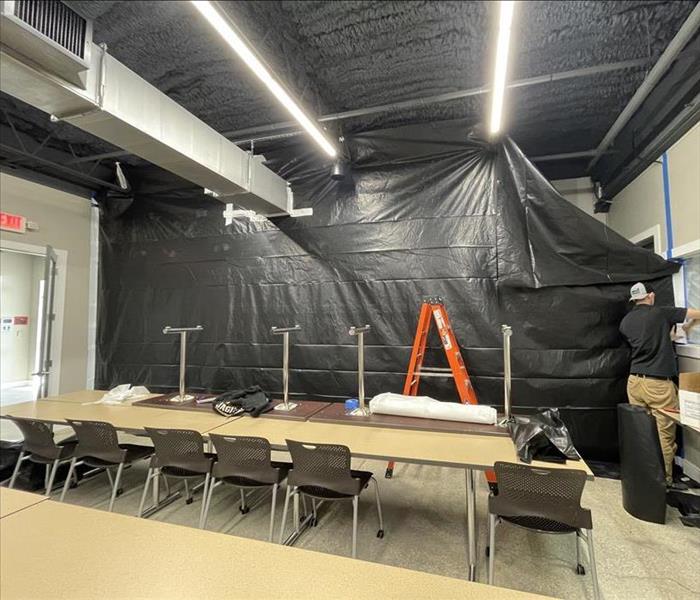 This blog provides valuable tips for addressing fire damage in multi-unit buildings, highlighting the importance of professional restoration.
This blog provides valuable tips for addressing fire damage in multi-unit buildings, highlighting the importance of professional restoration.
Fires in multi-unit buildings, such as apartment complexes or condominiums, present unique challenges when it comes to addressing fire damage. The safety and well-being of all occupants are paramount, along with the need for efficient restoration to minimize disruptions and restore the affected units. In this blog, we will provide valuable tips for addressing fire damage in multi-unit buildings, highlighting the importance of professional fire damage restoration and remediation services, such as those provided by SERVPRO®.
Safety First: Ensure Evacuation and Communication
In the event of a fire in a multi-unit building, immediate evacuation and effective communication are crucial. Ensure that all occupants are safely evacuated and accounted for. Notify emergency services and property management promptly. Establish clear lines of communication among affected residents, property management, and restoration professionals to ensure everyone is aware of the situation and can work together efficiently.
Engage Professional Fire Damage Restoration Services
Addressing fire damage in multi-unit buildings requires the expertise and resources of professional fire damage restoration services. Engage a reputable company, such as SERVPRO, with experience in handling fire damage in multi-unit dwellings. Their dedicated team of technicians will have the necessary knowledge, equipment, and skills to navigate the complexities of a large-scale restoration project.
Conduct a Thorough Inspection
Once the fire is extinguished and it is safe to enter the affected units, conduct a detailed inspection of each unit to assess the extent of fire damage. Document the damage through photographs and detailed notes, as this information will be crucial for insurance claims and the restoration process.
Provide Temporary Housing
If the fire damage in multi-unit buildings is severe, some or all affected residents may require temporary housing. Coordinate with property management to arrange suitable accommodations for displaced residents while the restoration process takes place. Clear communication with residents is essential to minimize disruption and ensure everyone is informed of the temporary housing arrangements.
Secure and Document the Property
Before restoration work can begin, it is crucial to secure the property to prevent further damage or unauthorized access. Property management should work closely with restoration professionals to board up broken windows, secure entrances, and protect the property from potential vandalism or theft. Documentation of the current condition, including photographs and detailed inventories of belongings, will be instrumental for insurance purposes.
Address Water Damage and Mold Prevention
Water damage is a common consequence of fire incidents due to firefighting efforts. In multi-unit buildings, there is an increased risk of water damage affecting adjacent units. Professional fire damage restoration services will thoroughly assess and mitigate water damage, ensuring proper drying methods are utilized to prevent mold growth and structural damage.
Comprehensive Cleaning and Restoration
Fire damage restoration experts will conduct comprehensive cleaning and restoration of all affected units. This process includes removing debris, cleaning surfaces, and eliminating odors caused by smoke and soot. Professional restoration technicians will utilize specialized equipment and techniques to ensure thorough and efficient restoration, minimizing downtime and disruptions for residents.
Communication and Coordination
Maintaining open lines of communication with both residents and property management throughout the restoration process is essential. Regular updates on the progress and estimated timelines will help manage expectations and ensure a smooth restoration process. Promptly addressing any concerns or questions from the residents will contribute to a positive and cooperative atmosphere during this challenging time.
Addressing fire damage in multi-unit buildings requires a comprehensive and organized approach. Engaging professional fire damage restoration and remediation services, such as those provided by SERVPRO, ensures the expertise and resources necessary for a successful restoration. These tips, along with clear communication and coordination among residents, property management, and restoration professionals, will help minimize disruptions, ensure the safety of all occupants, and restore the affected units efficiently. If you are facing fire damage in your multi-unit building, contact a professional fire damage restoration service promptly to secure the safety and well-being of all residents and commence the restoration process.
Removing Mold Stains from Clothing and Fabrics
3/13/2024 (Permalink)
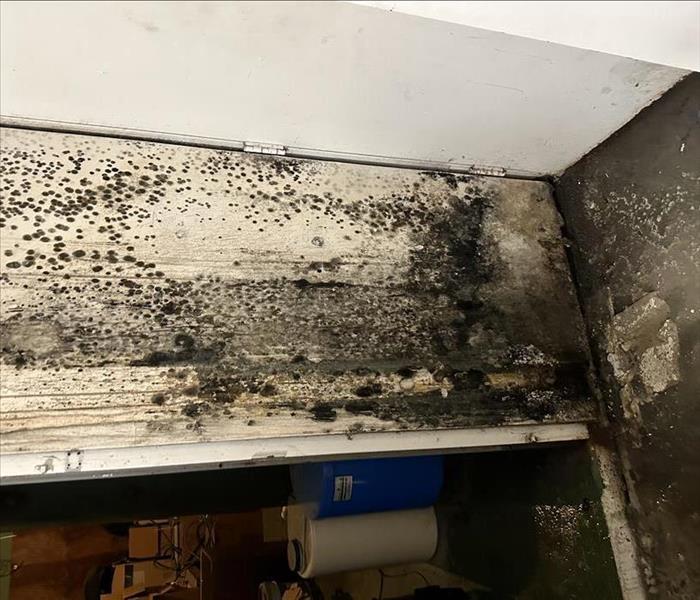 In this blog, we will explore how to effectively eliminate mold stains and restore your items.
In this blog, we will explore how to effectively eliminate mold stains and restore your items.
Discovering mold stains on your clothing and fabrics can be distressing. While mold growth poses potential risks to your property, it is possible to remove mold stains from clothes and fabrics with the right techniques. In this blog, we will explore how to effectively eliminate mold stains and restore your items.
Assess the Damage
Before attempting to remove mold stains, it is important to assess the extent of the damage and consider the fabric type. Some delicate fabrics may require professional cleaning to avoid damaging the fibers. Here are some initial steps to take:
- Take affected clothing and fabrics outside to prevent mold spores from spreading within your home.
- Brush off any loose mold spores or residue from the surface.
- If the mold stains are extensive or on delicate fabrics, consider seeking professional assistance from companies like SERVPRO® who specialize in mold restoration services.
Pre-Treatment
Before washing the stained items, it's important to pre-treat them:
- Mix a solution of one part white vinegar to three parts water in a spray bottle.
- Spray the affected areas generously with the vinegar solution.
- Allow the solution to penetrate the fabric for 10-15 minutes to help neutralize the mold stains and odor.
Washing Machine Method
For machine-washable items, follow these steps:
- Add a cup of white vinegar to the washing machine along with your regular detergent.
- Place the mold-stained items in the machine and wash them using the hottest water temperature allowed for the fabric.
- For colored fabrics, use oxygen bleach instead of chlorine bleach to prevent color fading.
- After washing, inspect the items. If any stains remain, repeat the pre-treatment step and wash them again.
Handwashing Method
For delicate or non-machine washable items, follow these steps:
- Fill a basin or sink with warm water and add a small amount of mild detergent.
- Submerge the mold-stained items and gently agitate them for a few minutes.
- Allow the items to soak in the soapy water for at least 30 minutes.
- Rinse the items thoroughly with clean water to remove all soap residue.
- Inspect the items. If any stains remain, repeat the pre-treatment step and handwash them again.
Drying
After washing, it's important to dry the items properly to prevent mold regrowth:
- Hang the items outdoors, preferably in sunlight, as sunlight has natural disinfectant properties.
- If outdoor drying is not possible, hang the items indoors near a fan or in a well-ventilated area.
- Ensure the items are completely dry before storing them to prevent moisture accumulation and potential mold growth.
Professional Assistance
If mold stains persist or if you are uncertain about treating certain fabrics, it is advisable to consult professionals who specialize in mold restoration services. They have the expertise and equipment to effectively remove mold stains from a variety of fabric types.
Removing mold stains from clothing and fabrics can be challenging but with proper techniques and the right approach, it is possible to restore your items. Regularly inspect your clothes and fabrics for any signs of mold growth and take prompt action to eliminate stains. Remember, prevention is key, so ensure your home has proper ventilation and address any underlying moisture issues to minimize the risk of mold growth on your clothing and fabrics.
A Guide to Protecting Your Important Documents from Water Damage
2/13/2024 (Permalink)
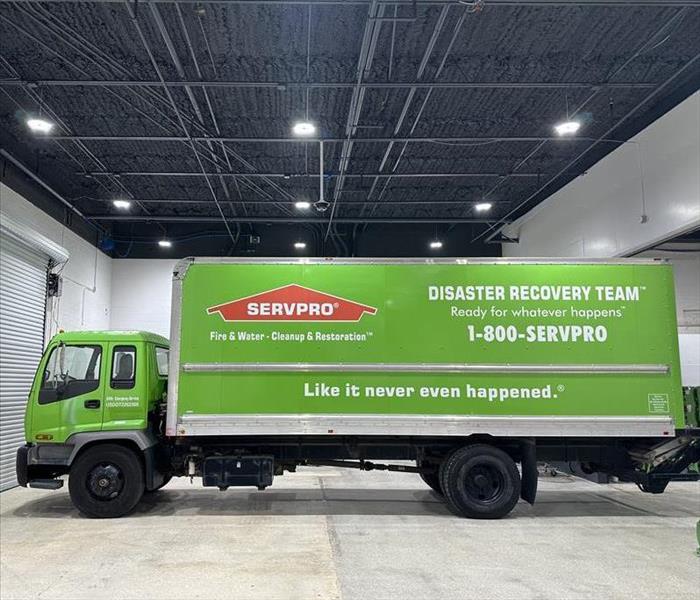 Contact us for any water damage restoration needs, including document restoration services.
Contact us for any water damage restoration needs, including document restoration services.
Here at SERVPRO®, we understand the stress water damage can cause, especially when it affects important documents and photos. Whether due to unforeseen floods, burst pipes, or leaks, water damage can wreak havoc on your important paperwork. In this blog, we'll share expert insights and tips on how to protect your important documents from water damage.
Identify and Prioritize Documents
Start by identifying and categorizing your crucial documents. This includes birth certificates, passports, property deeds, wills, insurance policies, financial records, and sentimental items like photographs. Prioritize these for protection.
Utilize Waterproof Containers or Storage
Invest in high-quality waterproof containers, safes, or storage solutions designed explicitly for document protection. Sealable plastic bags and fireproof safes can serve as a first line of defense against water damage.
Store Documents in Elevated Areas
Elevate document storage to areas less prone to water exposure. Consider installing shelves or cabinets in higher sections of your home or office, keeping your documents away from potential water sources like basements or ground-level floors.
Utilize Digital Backups
Embrace technology by creating digital backups of your important documents. Scan and store these in secure, cloud-based services or external hard drives. Regularly update and maintain these backups to ensure their accuracy.
Utilize Dehumidifiers
Use dehumidifiers in areas susceptible to moisture to reduce moisture levels and prevent the buildup of condensation. Additionally, you can use moisture-absorbing products like silica gel packets within storage containers to maintain dryness.
Consider Professional Document Restoration Services:
In the unfortunate event of water damage to your documents, seek professional assistance immediately. SERVPRO of Jacksonville South specializes in document drying and restoration services.
By implementing these proactive measures, you can significantly reduce the risk of water damage to your important documents, providing peace of mind and ensuring their safety for years to come. At SERVPRO, we're dedicated to not only restoring properties but also providing valuable advice to prevent and mitigate damage. Contact us for any water damage restoration needs, including document restoration services, and let us assist you in protecting what matters most. Stay informed, stay protected, and stay secure with SERVPRO.
Preparing Your HVAC System for Stormy Weather
1/9/2024 (Permalink)
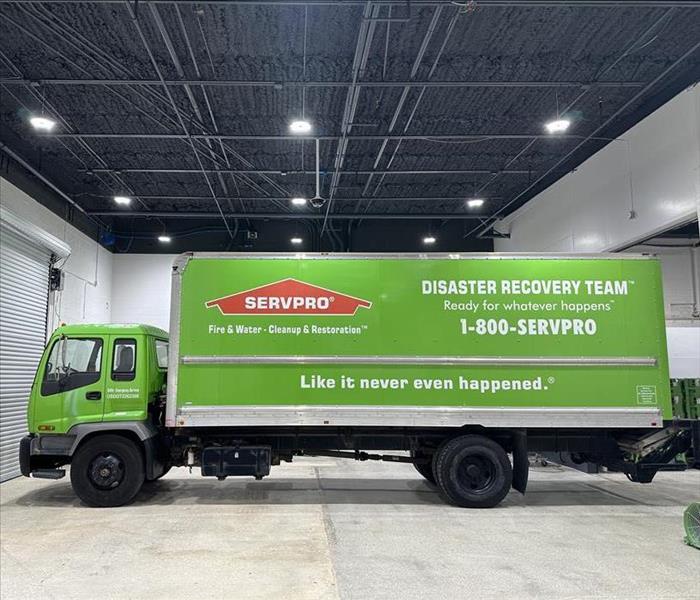 Stormy weather need not mean disaster for your HVAC systems if you are armed with the right information.
Stormy weather need not mean disaster for your HVAC systems if you are armed with the right information.
Weather in our region is often unpredictable. A sudden shift can bring heavy rain, and stormy weather, and cause trouble for residential and commercial property owners. A significant component that can be impacted by storms is your HVAC system.
Understanding the Risks
Before we dive into preparation, it's important to understand how stormy weather can affect your HVAC systems. High winds can cause debris to damage the outer components of the HVAC unit. Meanwhile, heavy rains and flooding can potentially lead to water damage, which can not only harm the mechanical and electrical parts of the system but also lead to mold growth if not addressed promptly.
Steps to Prepare Your HVAC System
- Secure your Outdoor Unit: If a storm is forecasted, make sure your outdoor unit is well-anchored and secure. This will prevent it from being damaged or moved by high winds or water.
- Install a Surge Protector: Power surges during storms can damage your HVAC system. Surge protectors work as gatekeepers, allowing only the necessary amount of electricity into the unit.
- Regular Inspection and Maintenance: Regular HVAC check-ups can help identify potential issues early. This prevents small issues from turning into major repairs after a storm.
- Turn Off Your HVAC during Severe Weather: In case of severe storms and flooding predictions, it may be safest to turn off the entire HVAC system. Once the storm passes, inspect for any visible damage before turning it back on.
- Use HVAC Covers: Protective covers for your HVAC unit can shield from storm-related debris. However, it's important to remove these promptly after the storm to ensure proper airflow and prevent moisture build-up.
All-Weather Partner: SERVPRO of Jacksonville South
And, if the unfortunate event of flood or water damage to your HVAC systems does occur, remember that our SERVPRO® team is a leader in storm damage cleanup and restoration. Our trained professionals possess the advanced skills and equipment necessary to restore your property to its pre-damage condition, ensuring a swift return to normalcy. With our team at the helm, you will feel "Like it never even happened."
Stormy weather need not mean disaster for your HVAC systems if you are armed with the right information and the backing of professionals like SERVPRO of Jacksonville South. Remember, we are here to help you every step of the way.
The Impact and Restoration of Fire Damage to Your Roof
12/16/2023 (Permalink)
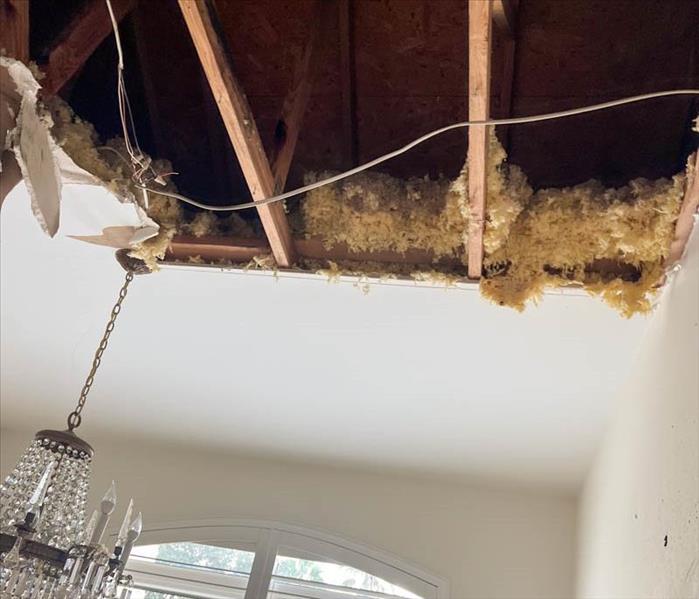 Fire damage can leave your home vulnerable to water intrusion.
Fire damage can leave your home vulnerable to water intrusion.
When a fire strikes a home, it can cause extensive damage, and your roof is not immune to its destructive effects. Fire damage to your roof can lead to a variety of issues, from structural integrity concerns to water damage. In this blog, we will discuss the impact of fire damage on your roof, the signs to look for, and how to restore your roof to its former strength and functionality.
Understanding Fire's Impact on Your Roof
Fire can weaken your roof's structure, damaging not only the shingles but also the underlying materials, such as the sheathing and support beams. Even if the fire didn't directly touch your roof, the intense heat and smoke can compromise its integrity. Over time, this can lead to leaks and further deterioration.
Signs of Fire Damage to Your Roof
Detecting fire damage to your roof is crucial for timely repairs. Look for signs like blistered or melted shingles, cracked or discolored roofing materials, or an acrid odor that lingers even after the fire is extinguished. These indicators are reasons to seek professional assessment and repair.
Assessing Roof Damage
After a fire, it's essential to have your roof professionally assessed. Experts will examine the extent of the damage, identifying areas that need repair or replacement. This assessment guides the restoration process and ensures your roof's structural integrity.
Roof Restoration and Repairs
Restoring a fire-damaged roof involves a combination of repairs and replacement. Professionals will address damaged sections, reinforcing the structure as needed. Depending on the extent of the damage, they may replace shingles, underlayment, or even the sheathing. The goal is to make your roof weathertight and secure once more.
Preventing Water Damage
Fire damage can leave your home vulnerable to water intrusion, as compromised roofs can lead to leaks. Proper restoration includes water damage prevention measures. This may involve installing new waterproofing materials and ensuring that your roof is sealed against the elements.
Fire damage is a serious threat to your home, and your roof is no exception. Understanding the impact of fire on your roof, recognizing the signs of damage, and seeking professional assessment and restoration are essential steps to protect your home's structural integrity. Trust in the expertise of professionals to restore your roof and ensure that it remains a reliable shield against the elements. For assistance with fire damage restoration, contact SERVPRO® of Jacksonville South. We're here to help you safeguard your home and peace of mind.
The Science Behind Mold Growth
11/14/2023 (Permalink)
It is no secret that mold growth can be a persistent problem here in the Sunshine State, so it's important to understand the science behind mold growth to effectively prevent and remediate it. In this blog, we'll delve into the ideal conditions for mold growth and the role of mold spores, providing you with valuable information to protect your home and loved ones.
Understanding Mold Spores
Mold is a type of fungus that reproduces through tiny, lightweight spores. These spores are present in the environment, both indoors and outdoors, and are the primary agents responsible for mold growth. Mold spores are incredibly resilient and can survive in various conditions, making them a challenging enemy in Florida's humid climate.
Ideal Conditions for Mold Growth in Florida
Mold thrives in damp environments, and Florida's high humidity levels create an ideal breeding ground. Homes and buildings in Florida are susceptible to mold growth, especially during the rainy season. Leaky roofs, plumbing issues, or improper ventilation can exacerbate the moisture problem.
Mold prefers temperatures between 77°F and 86°F (25°C - 30°C). In Florida, these conditions are commonly met, with warm temperatures throughout the year. Air conditioning can also create temperature variations that promote mold growth in hidden corners of your home.
Mold feeds on organic materials like wood, paper, and fabric. Given the abundance of wooden structures and materials in Florida homes, it's important to be vigilant and ensure these items are kept dry and well-ventilated.
Preventing Mold Growth
Now that we understand the ideal conditions for mold growth in Florida, let's discuss some proactive steps you can take to prevent it:
Maintain Proper Ventilation
Proper ventilation is crucial in reducing moisture levels in your home. Use exhaust fans in bathrooms and kitchens and ensure your HVAC system is well-maintained.
Address Leaks Promptly
Fix any water leaks in your home as soon as you discover them. Pay attention to your roof, plumbing, and windows, as they are common entry points for moisture. If your home suffers from water damage, it is important to address the damage as quickly as possible to prevent a full-blown mold infestation in your home.
Reduce Indoor Humidity
Invest in dehumidifiers to control indoor humidity levels. Keeping humidity below 60% can significantly hinder mold growth.
Regular Inspection
Conduct regular checks of your home, especially in areas where moisture might accumulate, such as basements and attics. Inspect your HVAC system for any mold growth.
Mold Removal and Remediation
In case mold does find its way into your Florida home, it's essential to act swiftly. SERVPRO® of Jacksonville South specializes in mold removal and remediation services, ensuring a thorough and effective approach to mold problems. Our team is equipped with the knowledge, experience, and equipment to safely remove mold and restore your home to a safe, clean environment.
Understanding the science behind mold growth and ideal conditions for mold spores is vital for residents of Florida. By taking proactive measures to prevent mold and addressing any issues promptly, you can protect your home and loved ones. If you ever find yourself in need of professional mold remediation services, trust SERVPRO® to handle the job with expertise and care. Remember, a mold-free home is a healthy home. Stay tuned for more valuable tips and insights from your SERVPRO® team in Jacksonville, FL!
How Water Can Damage Carpet, Hardwood, and Tile Flooring
10/9/2023 (Permalink)
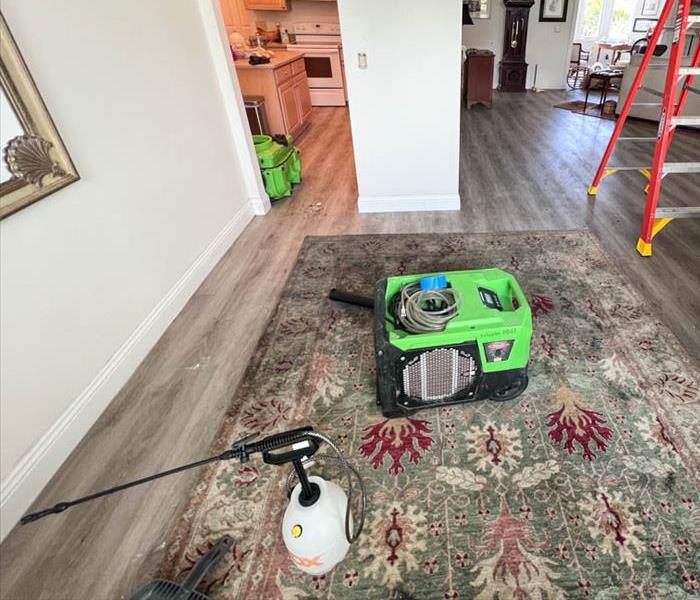 Water damage can be a homeowner's nightmare, especially when it affects your flooring.
Water damage can be a homeowner's nightmare, especially when it affects your flooring.
Water damage can be a homeowner's nightmare, especially when it affects your flooring. Whether it's from a burst pipe, flooding, or a leaking roof, water can wreak havoc on different types of flooring materials. In this blog, we'll explore the essential steps to assess water-damaged flooring in your Jacksonville home, covering carpet, hardwood, tile, and more, so you can make informed decisions for a swift and effective recovery.
Safety First
Before assessing any water damage, ensure your safety. Turn off the electricity in affected areas to avoid electrical hazards. If the water is deep or from a contaminated source, avoid contact and wait for professionals to assess the damage.
Start with Carpet
Carpet is particularly vulnerable to water damage as it can absorb moisture and become a breeding ground for mold. Begin by assessing the extent of saturation. If the damage is extensive or from contaminated water sources, it's usually best to remove and replace the carpet.
Hardwood Flooring
Hardwood flooring can warp and buckle when exposed to water. Check for swelling, warping, and cupping of the wood. Depending on the severity, hardwood floors may require professional drying and refinishing or replacement.
Tile and Grout
Tile may seem impervious to water, but if moisture seeps beneath the tiles or damages the grout, it can lead to structural issues and mold growth. Inspect for loose tiles, cracks, or discolored grout. Address any issues promptly to prevent further damage.
Laminate and Vinyl
Laminate and vinyl flooring can quickly become waterlogged and warp. Inspect for signs of swelling, separation, or bubbling. Depending on the extent of damage, you may need to replace affected sections or the entire floor.
Concrete Flooring
Concrete is more resistant to water damage, but it's not impervious. Look for signs of efflorescence (white, powdery deposits), cracks, or discoloration. Address any issues promptly to prevent structural problems.
Professional Assessment
In many cases, it's advisable to seek professional assistance, especially when water damage is extensive or if you're unsure of the full extent of the damage. Professionals, such as SERVPRO® of Jacksonville South, can provide a thorough assessment and recommend the best course of action.
Assessing water-damaged flooring in your Jacksonville home is a critical first step toward recovery. Whether it's carpet, hardwood, tile, or other materials, early assessment and appropriate action can make a significant difference in minimizing damage and costs. Remember that SERVPRO® of Jacksonville South is here to help with professional water damage assessment and restoration when needed. Don't hesitate to reach out for expert guidance in restoring your home's flooring to its former glory.






 24/7 Emergency Service
24/7 Emergency Service






